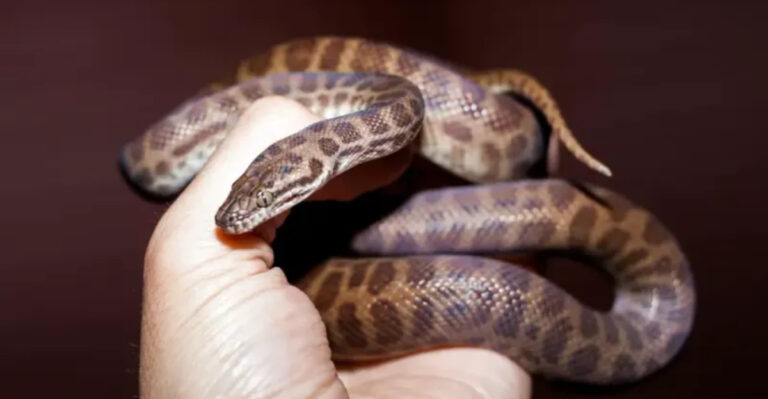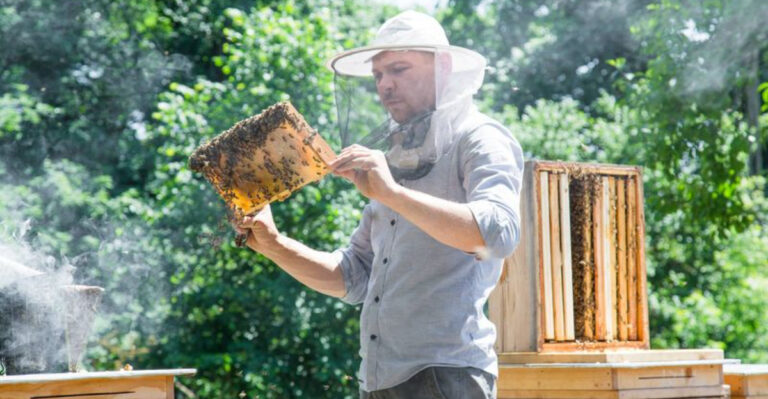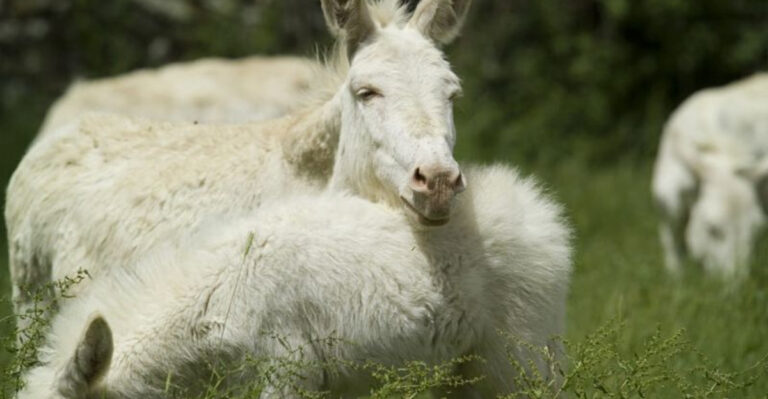What Do Sunfish Really Eat?
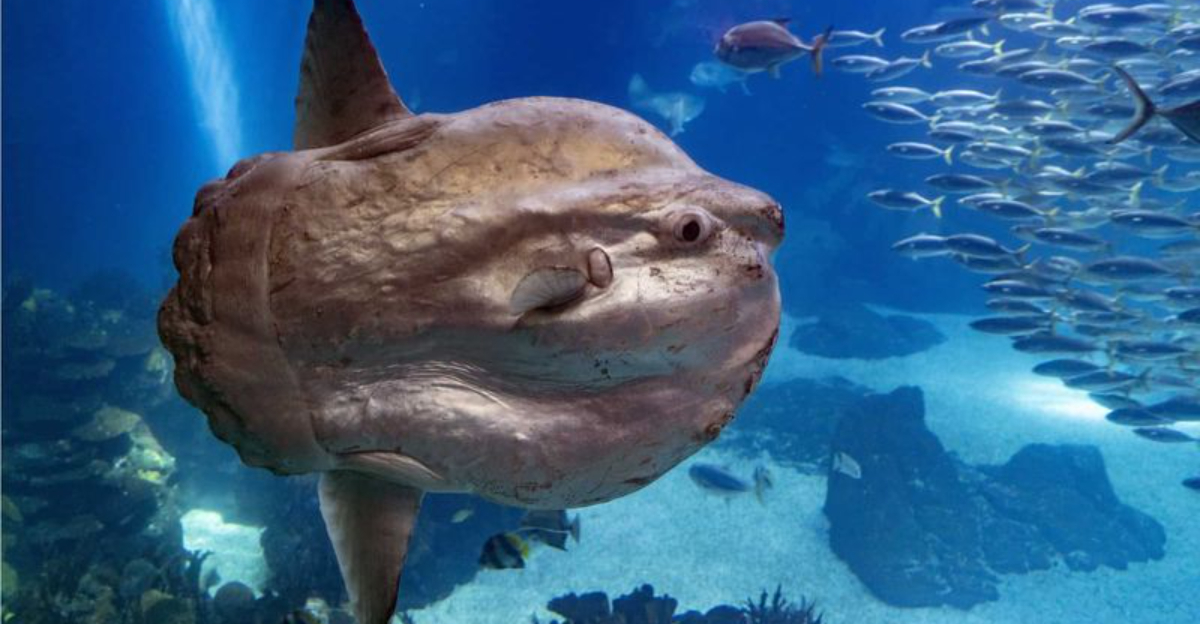
Ever wondered what keeps those bizarre-looking ocean sunfish going? These massive pancake-shaped swimmers are some of the ocean’s strangest inhabitants, but their eating habits are just as fascinating as their appearance.
From tiny zooplankton to surprisingly substantial creatures, the sunfish’s menu might shock you.
1. Jellyfish Buffet

Jellyfish form the cornerstone of a sunfish’s diet. These gelatinous creatures might seem nutritionally sparse to us, but sunfish have specialized digestive systems to extract maximum value from them.
Their thick lips and powerful beak-like mouths make short work of even stinging tentacles.
2. Small Fish Snacks
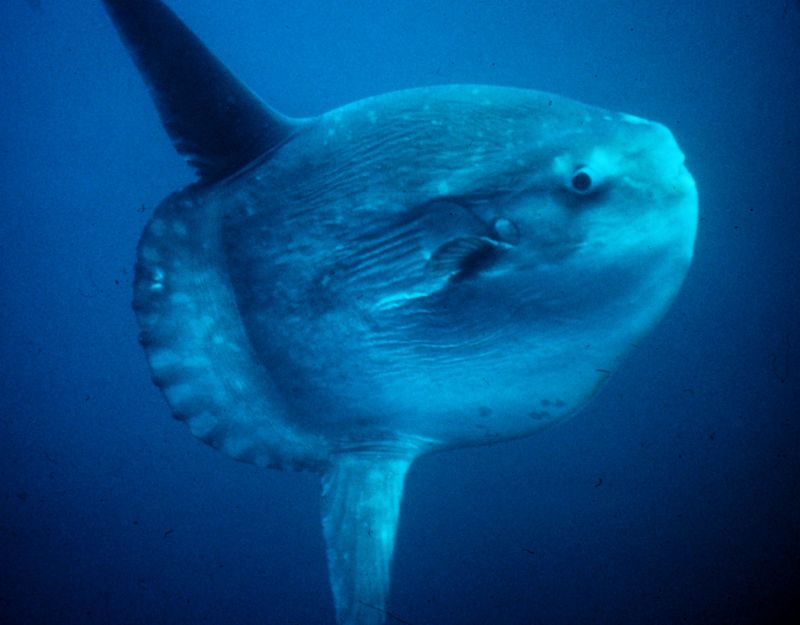
Contrary to popular belief, sunfish don’t just eat jellyfish! They opportunistically gobble up small fish when available.
Their hunting style isn’t exactly speedy – more like slow-motion ambush as they drift near schools of smaller fish and suddenly lunge forward with surprising precision.
3. Zooplankton Soup
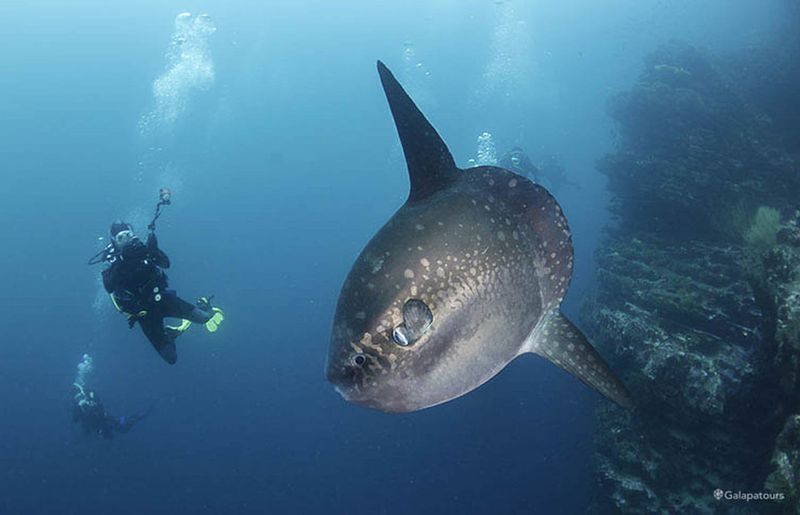
Tiny zooplankton make up a significant portion of a young sunfish’s diet. These microscopic critters float abundantly in ocean currents.
Sunfish filter these mini-meals by gulping large volumes of water. A juvenile sunfish can process gallons of plankton-rich water in a single feeding session.
4. Squid Surprise

When opportunity strikes, sunfish won’t pass up a squid snack! Their powerful jaws crush these cephalopods with ease.
Most commonly, they target smaller squid species during night feedings when these prey rise closer to the surface. The sunfish’s large eyes help spot the squid’s movement in dim light.
5. Crunchy Crustaceans
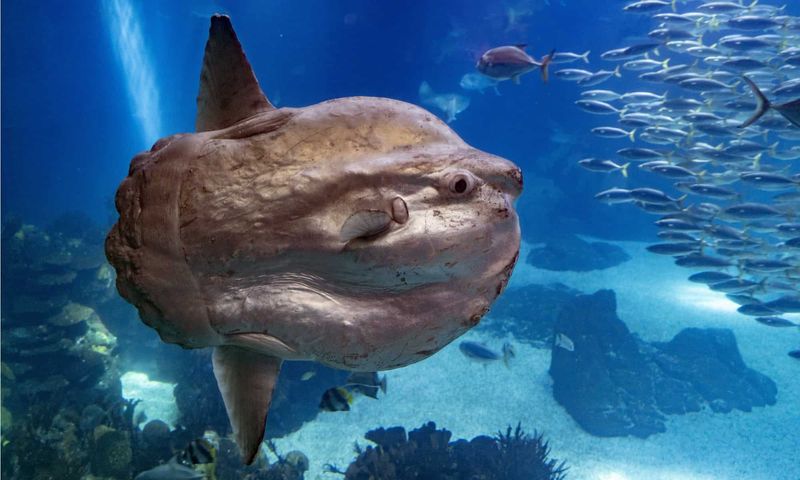
Small crustaceans like krill and tiny crabs occasionally end up on the sunfish menu. These protein-packed morsels provide essential nutrients.
Sunfish don’t actively hunt these creatures but consume them when they encounter dense patches. Their large mouths can scoop up dozens of krill in a single gulp.
6. Slimy Sea Salad
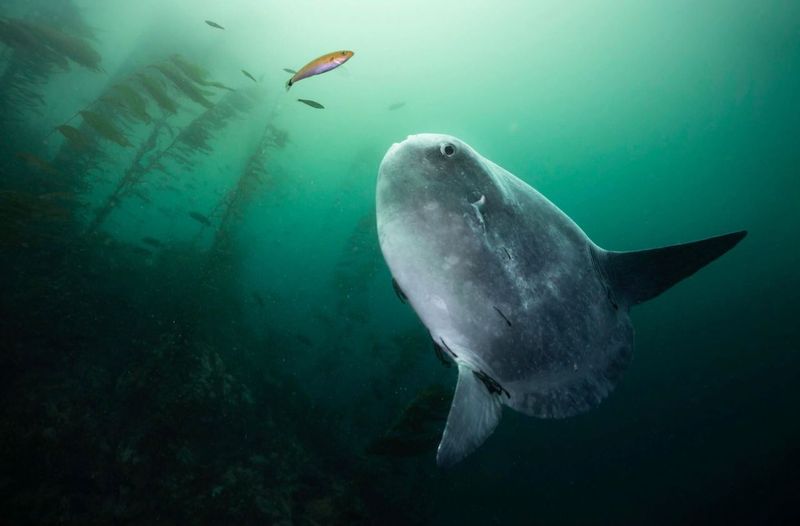
Seaweed and algae sometimes find their way into a sunfish’s stomach, though not intentionally. These plant materials get consumed during feeding frenzies.
While not nutritionally significant, the occasional bit of seaweed provides fiber and minerals. Scientists studying stomach contents regularly find these green hitchhikers mixed with animal prey.
7. Siphonophore Specialties
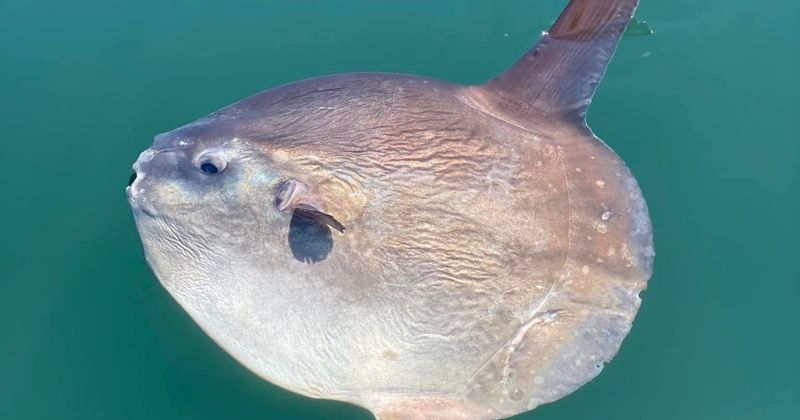
Chain-like colonies of siphonophores (relatives of jellyfish) make tasty treats for sunfish. These gelatinous strings can stretch several feet long.
Sunfish methodically slurp them up like underwater spaghetti. The Portuguese man o’ war, despite its powerful sting, is particularly favored – sunfish have evolved immunity to their venom.
8. Salp Smoothies
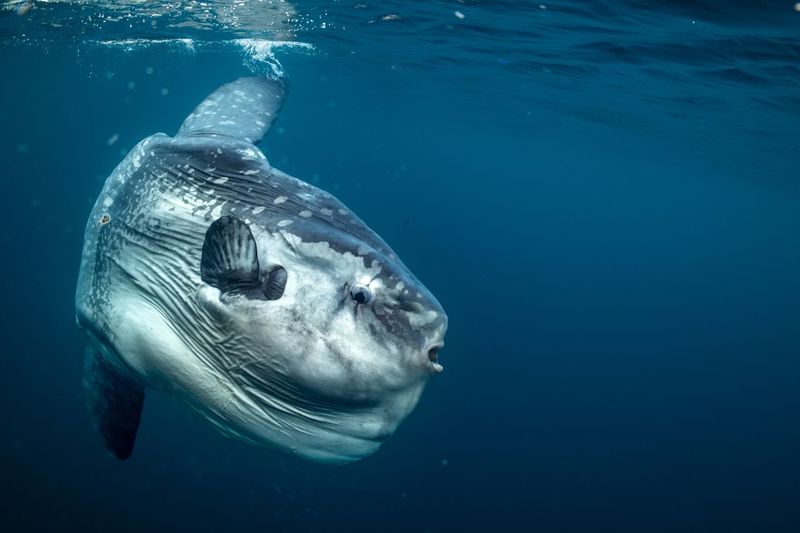
Barrel-shaped salps – gelatinous filter-feeders that look like transparent barrels – are perfect sunfish snacks. These jelly-like creatures often form chains or colonies.
Sunfish gulp them down whole. Since salps are mostly water with minimal nutritional value, sunfish must consume large quantities to get sufficient energy from these watery morsels.
9. Ctenophore Candies

Comb jellies (ctenophores) with their rainbow-refracting cilia make irresistible treats for sunfish. Unlike true jellyfish, these delicate creatures lack stinging cells.
Their soft bodies are easily digested, providing quick energy. Sunfish seem particularly attracted to the gentle pulsing movement and bioluminescent glow of certain ctenophore species.
10. Larval Lunch Boxes
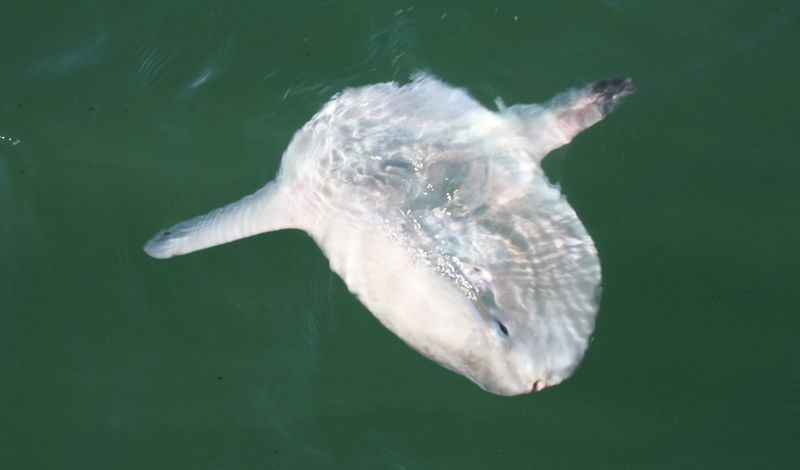
Fish and invertebrate larvae create living clouds in the open ocean – perfect snack-size morsels for sunfish. These tiny developing creatures concentrate in productive waters.
Sunfish swim with mouths agape through these larval patches. A single feeding session can result in thousands of larvae consumed, making them an important energy source.
11. Occasional Algal Blooms
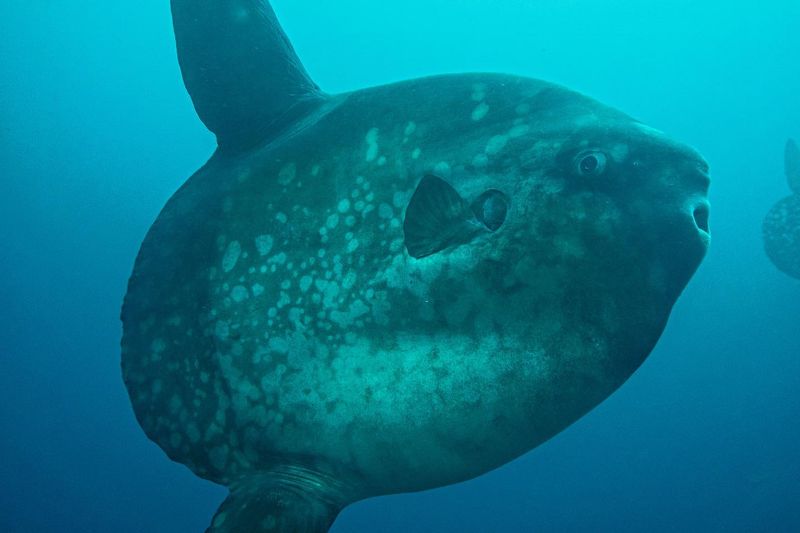
During dense algal blooms, sunfish sometimes filter-feed on the microscopic plants. While not their preferred food, these opportunistic feedings provide supplementary nutrition.
Their modified gill rakers can strain these tiny organisms from the water. Scientists have observed increased sunfish activity in areas experiencing seasonal algal blooms.
12. Bottom-Dwelling Bonuses
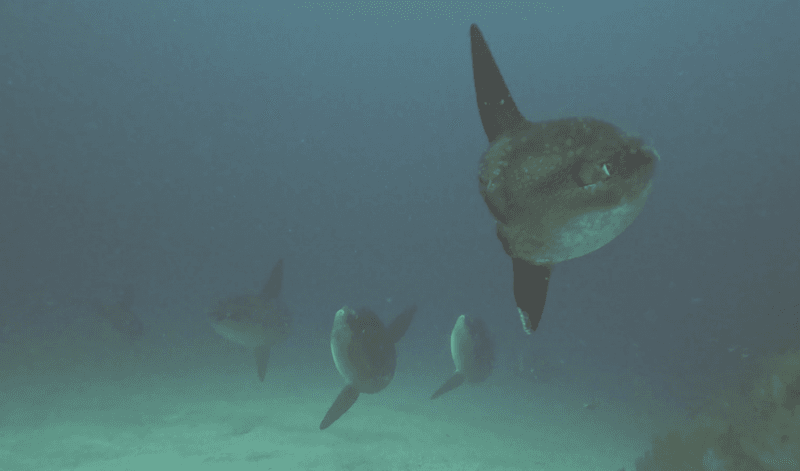
Occasionally, sunfish venture deeper to snack on bottom-dwelling creatures like sea cucumbers and slow-moving mollusks. These forays into deeper waters typically happen during seasonal migrations.
With their powerful beaks, they can easily crush shells and tough-skinned creatures. These deeper meals provide different nutrient profiles than their surface feeding.
13. Surprising Sargassum Snacks
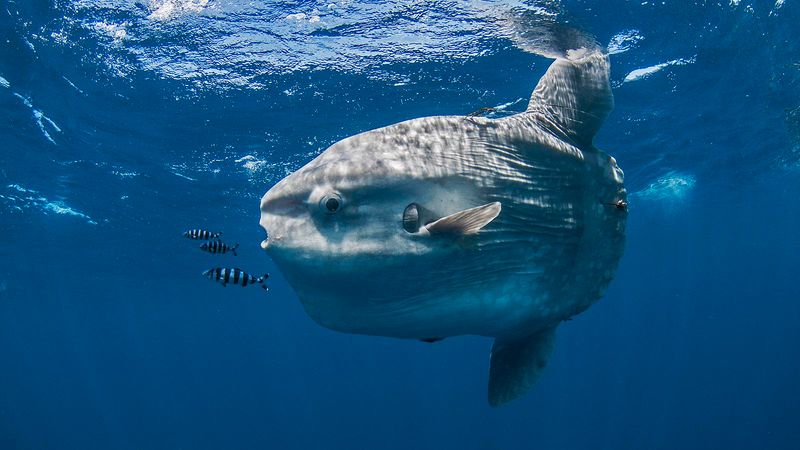
Within floating sargassum mats, sunfish find a buffet of small creatures hiding among the golden seaweed. These floating ecosystems teem with tiny fish, crabs, and shrimp.
Sunfish will sometimes push their massive bodies into the edge of these mats. Their feeding creates distinct disturbances visible from boats as the seaweed shifts and parts.
14. Cleaner Fish Cooperation
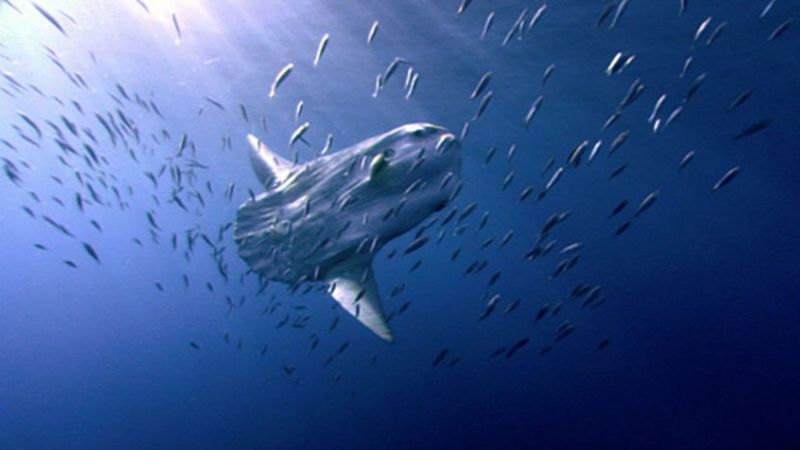
In a fascinating twist, sunfish sometimes visit cleaning stations where smaller fish eat parasites off their skin. While not technically eating, this relationship is crucial for their health.
Sunfish will position themselves vertically near reefs or kelp forests. They remain motionless while cleaner wrasses and other fish pick off harmful parasites – a mutually beneficial arrangement.


